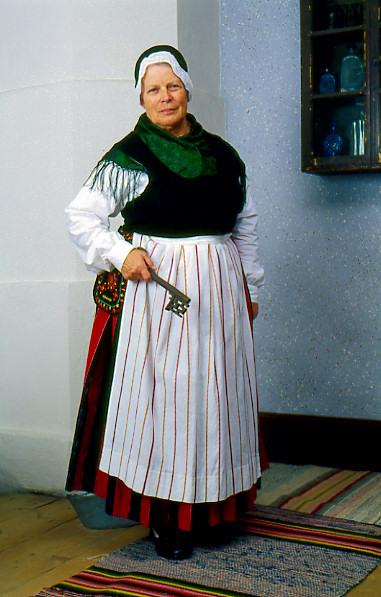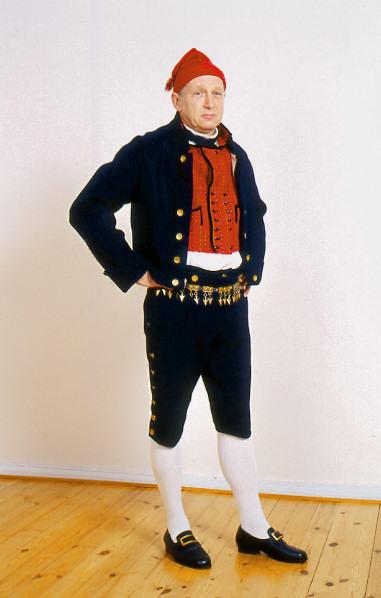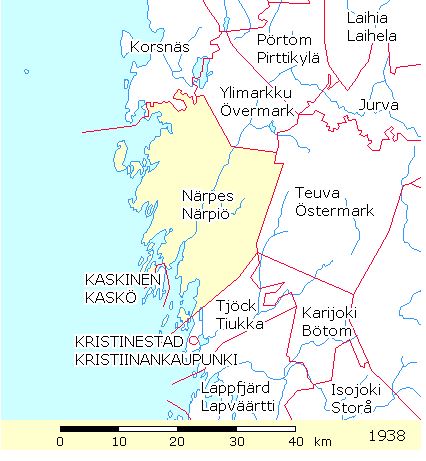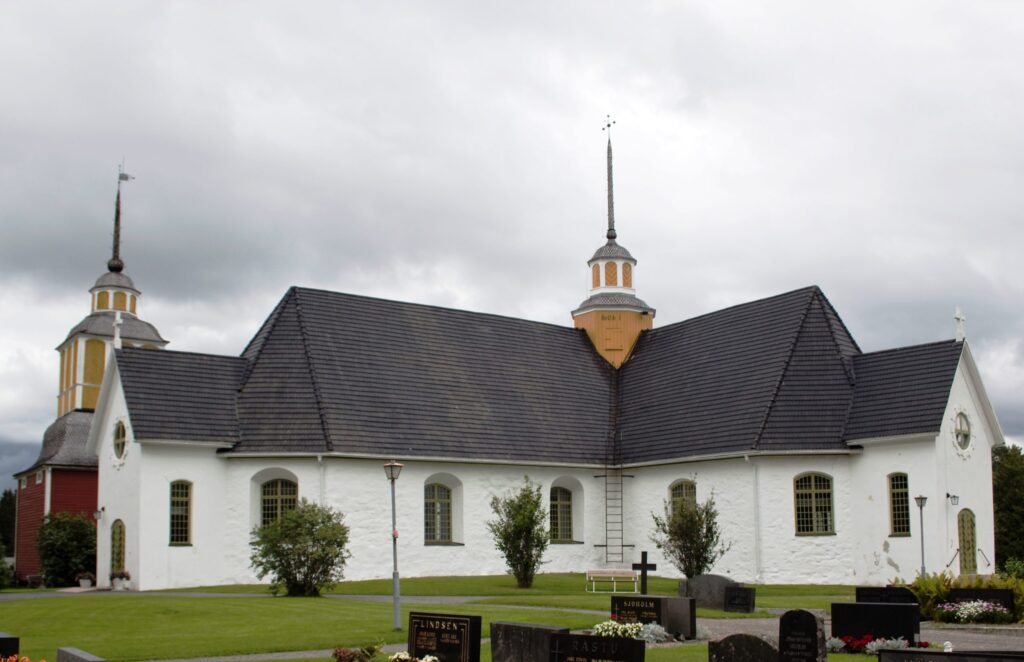Ostrobothnia
Närpes
Parish History
- Närpes is one of the oldest parishes in Finland. It likely was established by 1331 when the area was served by a Catholic
priest 6 - It became an independent parish in 1348 6
- As with the other large original parishes, it sub-divided into other parishes as distant communities grew.
Parish Records
Because parish Communion records are listed by village and farm name and because farm names often were used as a part of a person’s name, it is interesting to note the following farms.
Villages and farms of Narpes were recorded in T.W. Karsten’s work, Svesk Bygd I Osterbotten: Nu Och Fordom. 2 Narpes Parish Communion records were not used to confirm these findings.
To open a printable list of villages and farms (pdf), click here.
Historic Villages
The historic villages of Närpes include:
- Back
- Bole
- Finnby
- Gottböle
- Kalaks
- Kaldnas
- Klaresund
- Knåpnäs
- Kåtnäs
- Norrnäs
- Nämpäs
- Näsby
- Pielaks
- Rangsby
- Ståbacka
- Tjärlaks
- Träskböle
- Väster-Yttermark
- Öster-Yttermark
Farms
- Uppgårds
- Skrivars
- Filpus
- Heikfolk
- Böling
- Härts
- Hermans
- Harv
- Simons
- Härtsböle
- Granskog
- Mickels
- Lassander
- Svens
- Snickars
- Smeds
- Håkans
- Kull
- Väster
- Nygåࣻrd
- Sund
- Klemets
- Ers
- Gullmes
- Nicks
- Lillnicks
- Skinnar
- Malm
- Josslas
- Gros
- Heikfolk
- Svartbäck
- Karlå
- Norrgrann
- Mannfolk
- Ivars
- Bärnes
- Prints
- Back
- Johannesberg
- Tomasfolk
- Rusk
- Mattfolk
- Långåls
- Nygård
- Antas
- Erkas
- Nissfolk
- Ollant
- Krok
- Bondfolk
- Bonde
- Söderman
- Haga
- Gärds
- Benvik
- Eskilsö
- Teir
- Konn
- Mattfolk
- Klarasund
- Bertils
- Knåp
- Benvik
- Eskilsö
- Nygårds
- Perus
- Klockars
- Nynäs
- Teir
- Åbbel
- Erikslund
- Nordman
- Snickars
- Lassa
- Knuts
- Smeds
- Gräggas
- Markusfolk
- Frants
- Räv
- Skomars
- Finne
- Näs
- Nygård
- Nybacka
- Rös
- Langels
- Martens
- Skomars
- Lassfolk
- Jossfolk
- Näs
- Åbbel
- Mjödträsk
- Skata
- Norrgård
- Teir
- Hannus
- Perus
- Kamb
- Ivars
- Maris
- Klåvus
- Änst
- Klemets
- Gnidars
- Lassfolk
- Jeppe*
- Sigg
- Råtts
- Hannus
- Tåg
- Ellfolk
- Elpe
- Svalskulla
- Skrattnäs
- Brådd
- Berg
- Antfolk
- Båsk
- Back
- Småfisk
- Långvik
- Vallvik
- Pettersborg
- Uppgård
- Granskog
- Ömossa
- Svens
- Unis
- Lassfolk
- Norrgrann
- Södergrann
- Backfolk
- Västerback
- Hermans
- Granö
- Traskböle
- Kamb
- Joppas
- Nygårds
- Mannfolk
- Pellkolk
- Gädda
- Mattfolk
- Frost
- Lassfolk
- Norrholm
- Kroksmåssa
- Uljens
- Håkans
- Kamb
- Mangs
- Pellas
- Gull
- Lång
- Gädda
- Pått
- Simons
- Spelman
- Lärka
- Bengs
- Näs
- Säderback
- Hummelgård
- Skomars
- Saks
- Risås
- Mickels
- Smeds
- Knös
Folk Dress
Parish folk dress can be recognized by its style, colors and patterns. Until 1871, Närpes and Overmark were one parish. As such, they are represented by the one parish folk dress.
Närpes-Overmark folk dress photos used with permission of the Brage costume agency.


References
- Genealogical Society of Finland, HisKi project, Närpes parish, http://hiski.genealogia.fi/hiski/a6bh7q?en+0364
- Karsten T.W., Svesk Bygd I Osterbotten: Nu Och Fordom, Helingfors, 1923, Närpes parish, pages 23 – 45
- Närpes Church image, https://commons.wikimedia.org/wiki/File:N%C3%A4rpes_church.jpg
- Närpes Church stables, https://www.visitnarpes.fi/sv/kyrkstallarna
- Narpes Church stable image, https://commons.wikimedia.org/wiki/File:N%C3%A4rpes_church_stables.jpg
- Närpes Folk Dress; Woman’s – https://www.brage.fi/sve/draktbyra/draktbyran/folkdrakter/view-163648-15;
Man’s – https://www.brage.fi/sve/draktbyra/draktbyran/folkdrakter/view-163648-12 - Närpes Forsamling; http://www.narpesforsamling.fi/sv/content/narpes-kyrka-0
- Närpes Parish; Wikipedia; https://sv.wikipedia.org/wiki/N%C3%A4rpes_f%C3%B6rsamling
- Visit Närpes,https://www.visitnarpes.fi/en/about-n%C3%A4rpes




